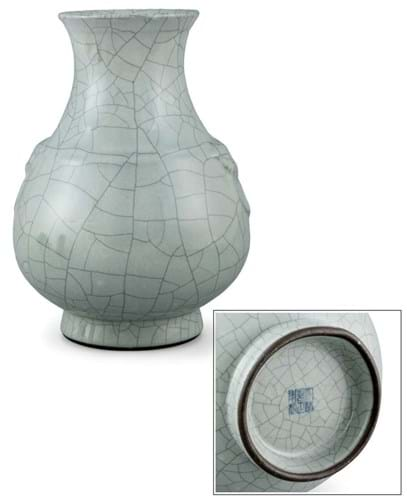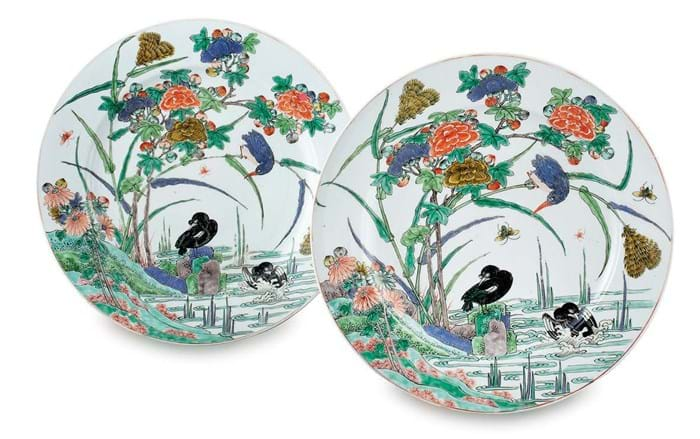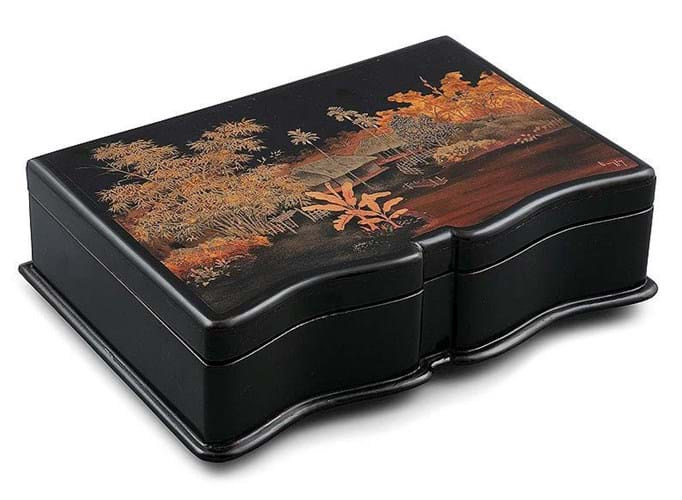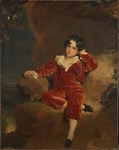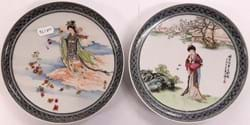The latest Asian art sale at Adam’s (25% buyer’s premium) in Dublin was topped by an unexpected bid for a guan-type porcelain vase or hu.
Guan ware is one of the five famous wares of the Song dynasty – a high-status stoneware with a surface decoration that relied heavily on a randomly crazed network of lines in the glaze.
It was much imitated in future epochs, particularly in the Qing period when, alongside other Song style wares, it was reproduced both to display technical excellence and as an honorific exercise.
This 10in (25cm) vase carries a six-character reign mark to the base for the emperor Yongzheng (1722- 35). The auction house did not deem it of the period but several bidders clearly did.
Estimated at €300-500 at the sale on June 29-30, it hammered at €365,000 (£331,800) – a price akin to sums bid in recent years for Yongzheng-period copies of Song wares.
Last year Durrow auction house Sheppard’s sold a ‘double-dragon’ form vase with a Yongzheng mark and a bluish-green glaze harking back to the Longquan celadon wares of the Song for €1.2m (£1.1m), setting a record for Chinese art in Ireland.
It was related to a vase sold at Christie’s Hong Kong in 2017 for HK$124m (£12.4m) – a record for any Chinese monochrome.
Argentinian duo
Adam’s sale, headed by recently appointed French specialist Thibault Duval, included pieces that came by descent from two Argentinian sources: Carlos Alfredo Tornquist Altgelt (1885-1953), a member of a prominent banking family, and Juan Carlos Katzenstein (1925-2018), a diplomat who worked in Beijing from 1975-78 and later at the Vatican and in Malta.
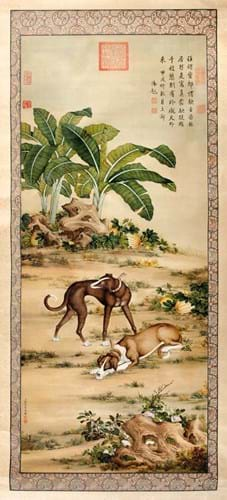
Ink on silk scroll painting of two of the Qianlong emperor’s hounds after Giuseppe Castiglione – €110,0000 (£100,000) at Adam’s.
The latter was the source of an ink on silk scroll painting of Moyuli and Jinchixian, two hounds of the Qianlong emperor, after those by Giuseppe Castiglione that appear the Album of the Ten-Prized Dogs c.1744 in the Palace Museum, Taipei.
It is a pastiche rather than a faithful copy including the artist’s signature and five imperial seals but probably dates to the 20th century. It received the very broad estimate of €10,000-100,000 and did a little better, selling at €110,0000 (£100,000).
Some of Altgelt’s collection of Qing hardstone carvings had previously formed part of the Joseph Vallot (1854-1925) sale at Drouot in 1925.
Vallot, a French astronomer, geographer, naturalist and alpinist, built a home on Mont Blanc (the Refuge Vallot) that included an observatory and a ‘salon chinoise’.
Probably 19th century, a 7in (18cm) phoenix wine pot and cover carved in a desirable white stone was the top-seller at €10,500 (£9550).
With a provenance to Castel of Conon in Blésois, France, a pair of 13½in (34cm) Kangxi (1661-1722) flycatcher and magpie dishes sold just below hopes at €22,000 (£20,000).
Marked with a cobalt blue flower to the base, these were probably made as marriage dishes – the birds a reference to the ancient legend of the Oxherd and the Weaver girl who are separated but for one day each year when they can meet thanks to a bridge of magpies crossing a celestial river.
Tran Phuc Duyen trio
The auction was also notable for the inclusion of three lacquer pieces signed for Tran Phuc Duyen (1923-93), a graduate of the Ecole supérieure des Beaux-Arts d’Indochine in Hanoi.
This trio of works dated from c.1950, the period when, still living and working in Vietnam, he received numerous commands from bourgeois families and European officials, before moving to France in 1954.
A 10in (26cm) cigar box with musical movement decorated in gilt and polychrome lacquer with a landscape of the delta region sold at €11,000 (£10,000), followed by a shallow circular dish worked as a lotus pond (€9500/£8640) and a box titled Washing on the River Box dated 1952 (€8500/£7730). All three pieces had been restored.
Tran Phuc Duyen’s work is more common in Paris: a panel was sold by Lynda Trouvé in September 2020 for €38,000 (£34,550).
The École des Beaux-Arts de l’Indochine was essentially a French art academy in Vietnam.
Opened by the French government in colonial Hanoi in 1924, the curriculum taught the fundamentals of a classical academic painting, all of them new to Vietnamese students, plus traditional local techniques such as silk painting and lacquerwork.


